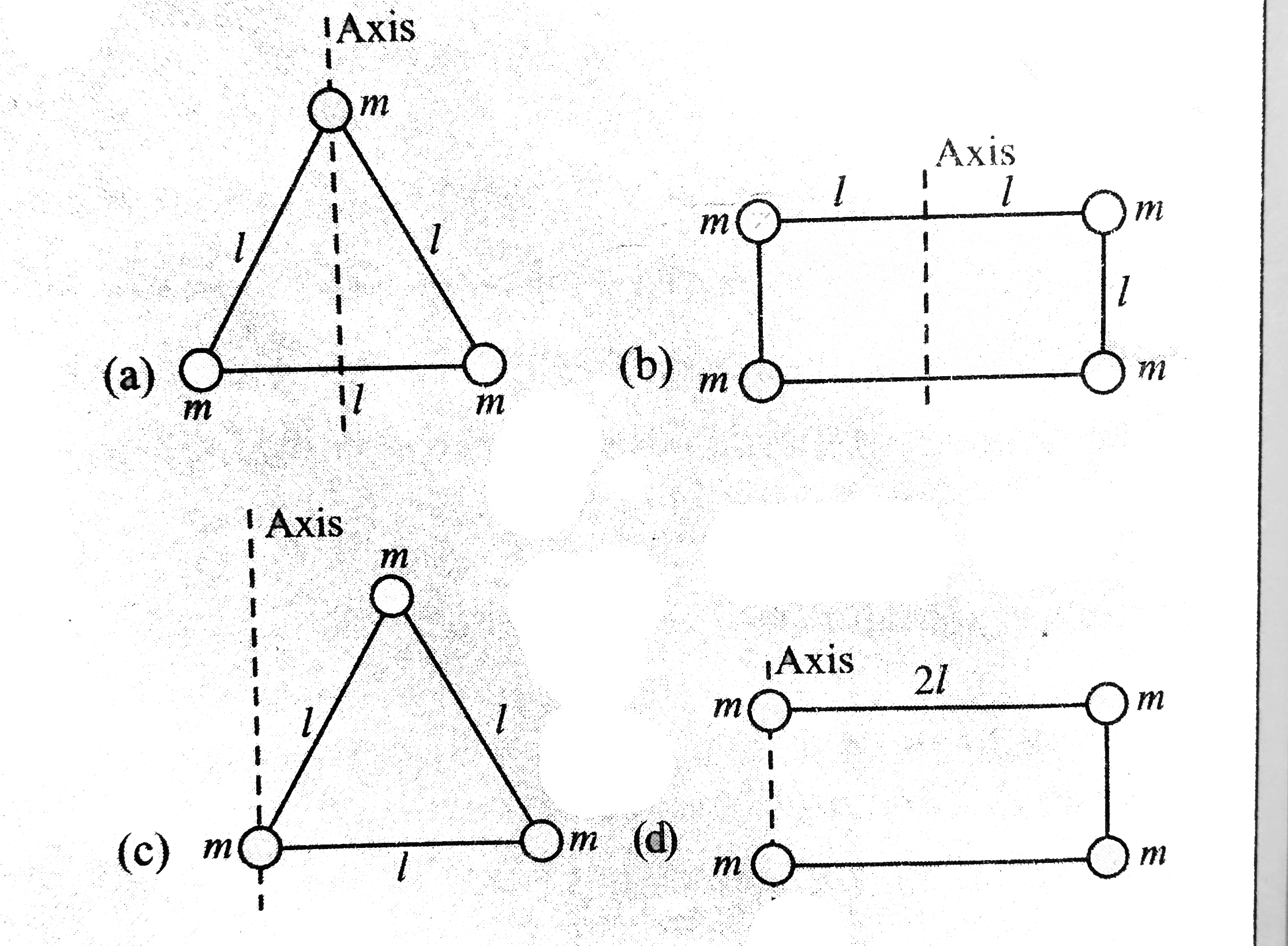(A) : Moment of inertia of a particle changes with axis of rotation.
(R ) : Moment of inertia depends on mass and distance of the particle from the axis of rotation.
Both (A) and (R ) are true and (R ) is the correct explanation of (A)
Both (A) and (R ) are true and (R ) is not the correct explanation of (A)
(A) is true but (R ) is false
Both (A) and (R ) are false
The correct Answer is:A
To solve the question, we need to analyze the assertion (A) and reason (R) given regarding the moment of inertia of a particle.
1. Understanding Moment of Inertia:
- The moment of inertia (I) of a particle about a given axis of rotation is defined as the product of the mass of the particle (m) and the square of its perpendicular distance (r) from the axis of rotation.
- Mathematically, it is expressed as:
I=m⋅r2
2. Analyzing the Assertion (A):
- The assertion states that "the moment of inertia of a particle changes with the axis of rotation."
- This is true because the moment of inertia depends on the distance of the particle from the axis of rotation. If the axis of rotation changes, the distance (r) will also change, thus altering the moment of inertia.
3. Analyzing the Reason (R):
- The reason states that "the moment of inertia depends on mass and distance of the particle from the axis of rotation."
- This is also true. The formula I=m⋅r2 shows that both mass and the distance from the axis of rotation are crucial factors in determining the moment of inertia.
4. Conclusion:
- Since both the assertion and the reason are true, and the reason correctly explains why the assertion is true, we conclude that both statements are correct.
- Therefore, the correct option is that both assertion and reason are correct, and the reason is the correct explanation for the assertion.
Final Answer:
Both assertion (A) and reason (R) are correct, and the reason is the correct explanation for the assertion.
---
- The moment of inertia (I) of a particle about a given axis of rotation is defined as the product of the mass of the particle (m) and the square of its perpendicular distance (r) from the axis of rotation.
- Mathematically, it is expressed as:
I=m⋅r2
- The assertion states that "the moment of inertia of a particle changes with the axis of rotation."
- This is true because the moment of inertia depends on the distance of the particle from the axis of rotation. If the axis of rotation changes, the distance (r) will also change, thus altering the moment of inertia.
- The reason states that "the moment of inertia depends on mass and distance of the particle from the axis of rotation."
- This is also true. The formula I=m⋅r2 shows that both mass and the distance from the axis of rotation are crucial factors in determining the moment of inertia.
- Since both the assertion and the reason are true, and the reason correctly explains why the assertion is true, we conclude that both statements are correct.
- Therefore, the correct option is that both assertion and reason are correct, and the reason is the correct explanation for the assertion.
Both assertion (A) and reason (R) are correct, and the reason is the correct explanation for the assertion.
Similar Questions
Knowledge Check
- Question 1 - Select One
Moment of inertia of body depends upon
Amass of the bodyBaxis of rotation of the bodyCshape and size of the bodyDall of these - Question 2 - Select One
Assertion: Value of radius of gyration of a body depends on axis of rotation.
Reason: Radius of gyration is root mean square distance of particle of the body from the axis of rotation.ABoth assertion and reason are true and reason is the correct explanation of assertion.BBoth assertion and reason are true but reason is not the correct explanation of assertionCAssertion is true but reason is false.DBoth assertion and reason are false.
The moment of inertia of a body about a given axis of rotation depends upon :-
View SolutionThe moment of inertia of a body depends upon
View Solution(A) : Moment of inertia plays the same role in rotational motion, as mass plays in linear motion.
(R ) : Moment of inertia depends only on mass of the body.View SolutionCalculate the moment of inertia of each particle in Fig. about the indicated axis of rotation.
 View Solution
View SolutionWhen the axis of rotation of a body changes does moment of inertia also change ? Why ?
View Solution(A) : Two circular discs of equal masses and thickness made of different material, will have same moment of inertia about their central axes of rotation.
(R ) : Moment of inertia depends upon the distribution of mass in the body.View Solution

